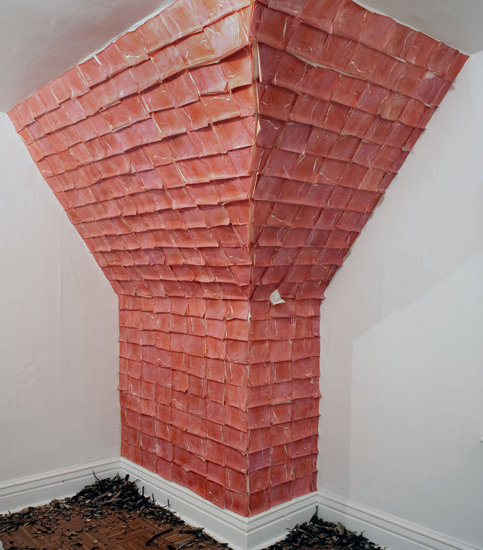
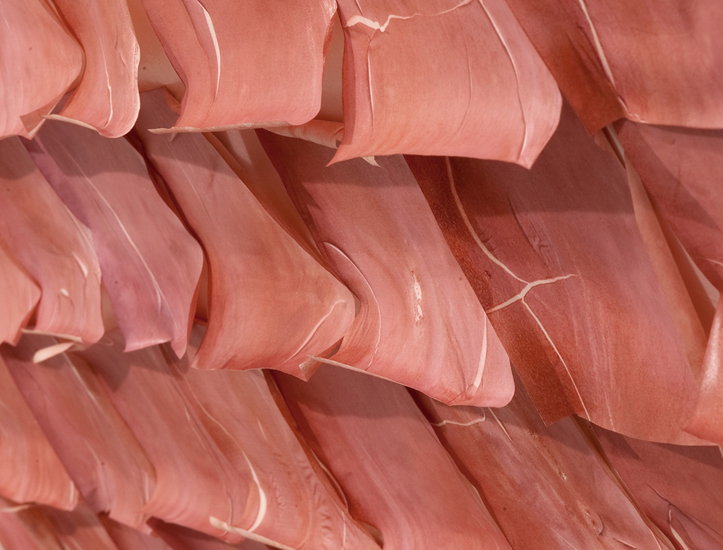
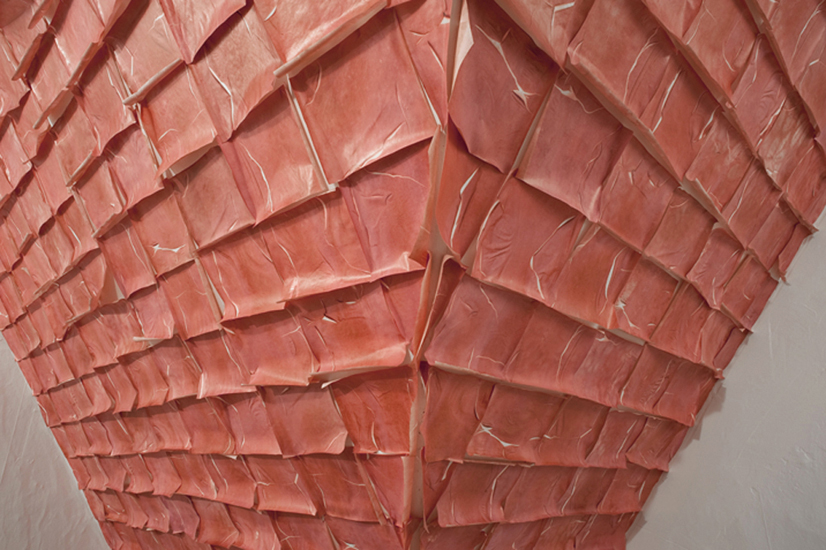
Transience and Resistance
Site-specific installation
Winnipeg, MB
In the spring of 2010, I began to work within the attic of an old house. At the time, I was studying an essay by architect Juhani Pallasmaa, who noted that the “materials and surfaces [of fragile architecture] have a richly complex language of their own that evolves and changes over time.” He argued that buildings made out of sensitive matter develop a texture as they age: a presence that engages visitors in a multi-sensory experience.
I wanted to investigate this idea further and was already exploring the physical properties of the Polaroid print. This led me to work intuitively through a manual process of microwaving, scanning, printing, ironing onto rice paper, and then washing hundreds of Polaroid surfaces, as though running them through a rigorous life cycle. I then installed the delicate prints on an inside wall of the attic. Not only was I stimulated by the “complex language” of the fractures in the walls of the building that surrounded me, but I also experienced a unexpected sensation: the aging plaster walls gave the adjacent skin-like membranes a unique expressive power.
Both architecture and photographic materials are changing with time: eroding and moving towards futility. However, there is a sentient quality about both surfaces – a fragility that speak pleasurably of memory and the human condition. My installation communicated duelling messages. It resisted a move towards futility, while also accepting the inescapable passing of time.
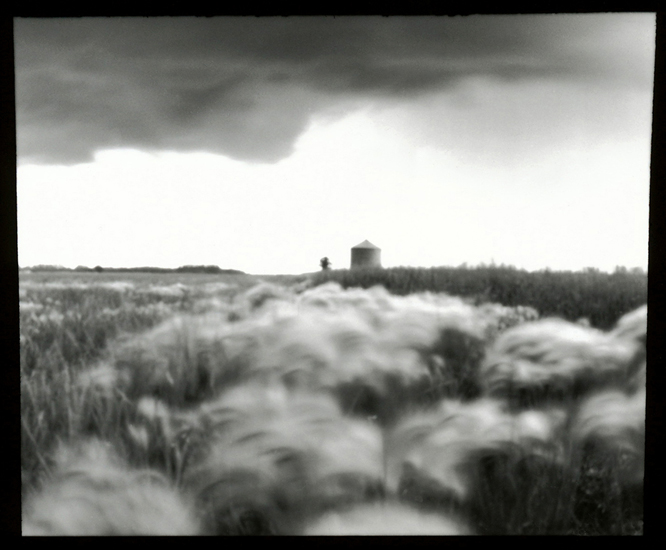
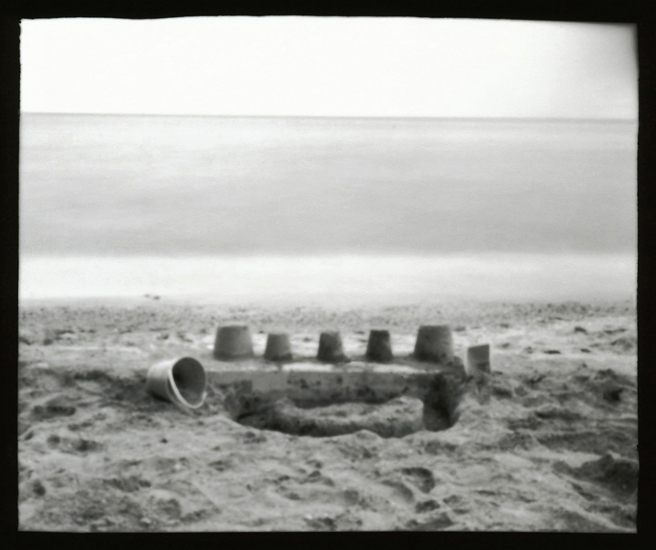
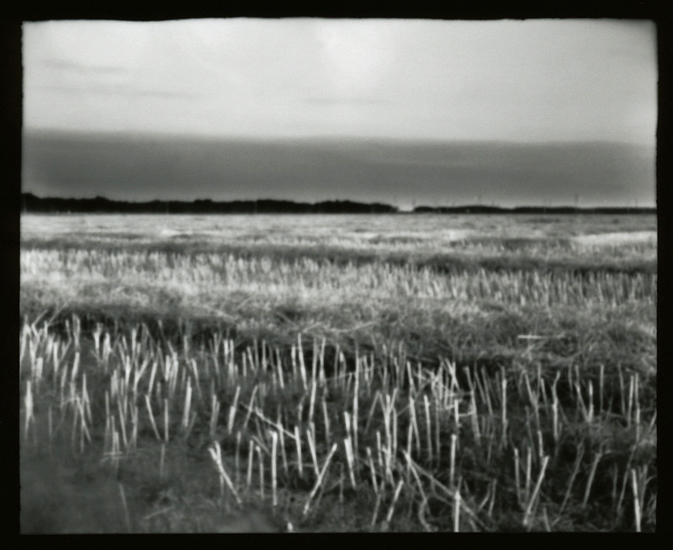
Meditations on Memory
gelatin silver prints
Between 2003 and 2007, I photographed these environments with a pinhole camera obscura. It facilitated images with an imperfect and ethereal quality, reminiscent of a flashback. Its handmade body was devoid of mechanisms, and lacking in charm…a black box filled with absolute darkness…a repository for lost time, where the present can mirror the past. There was no shutter. Light seeped through a tiny aperture to one sheet of film. I counted for an exposure, covered the hole, and crossed my fingers.
This organic process freed me from the technical immediacy of digital production and persuaded me to slow down and reclaim my past. The absence of lens and viewfinder prolonged the realization of the images until the development and printing stages were completed in my darkroom. The fibre-based contact prints are miniature in scale, measuring 4x5”, and meant to be viewed at close range. An intimacy forms between viewer and image. The photographs are reflections of self-exploration. They are meditations on memory.
When viewers engage with a photograph, they see something that is not there. It has the power to resurrect a mental image in the viewer’s mind and take on a new existence. Life occurrences, desires and imaginings transform a memory into a new experience, and may leave someone asking, “Is this photograph a memory of reality or fantasy?”